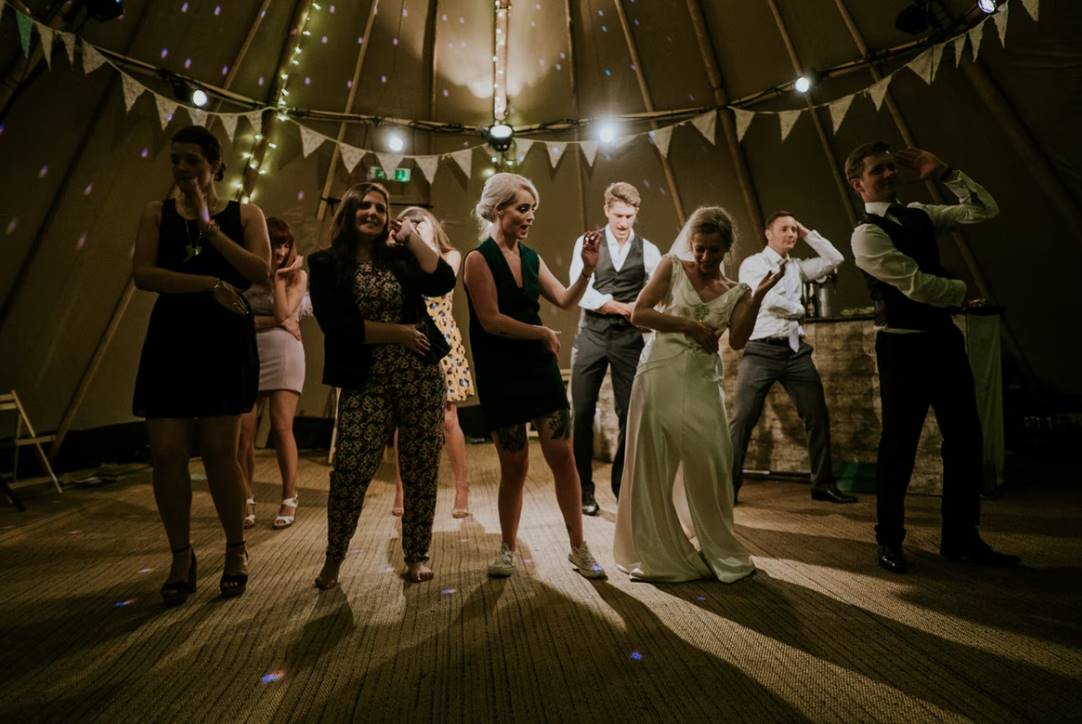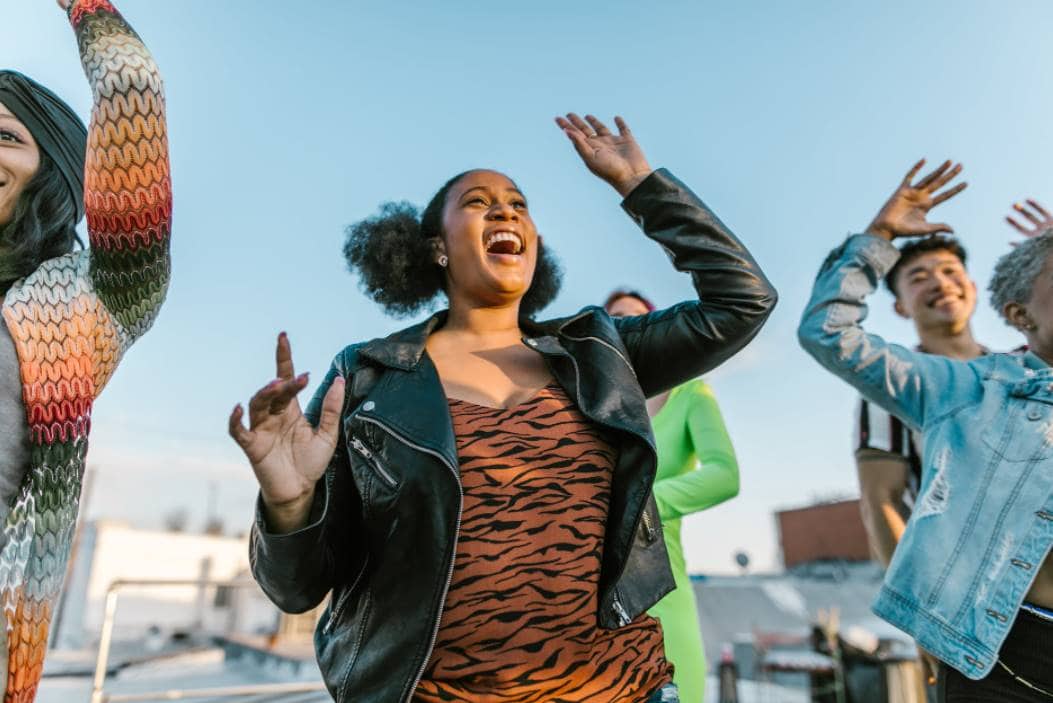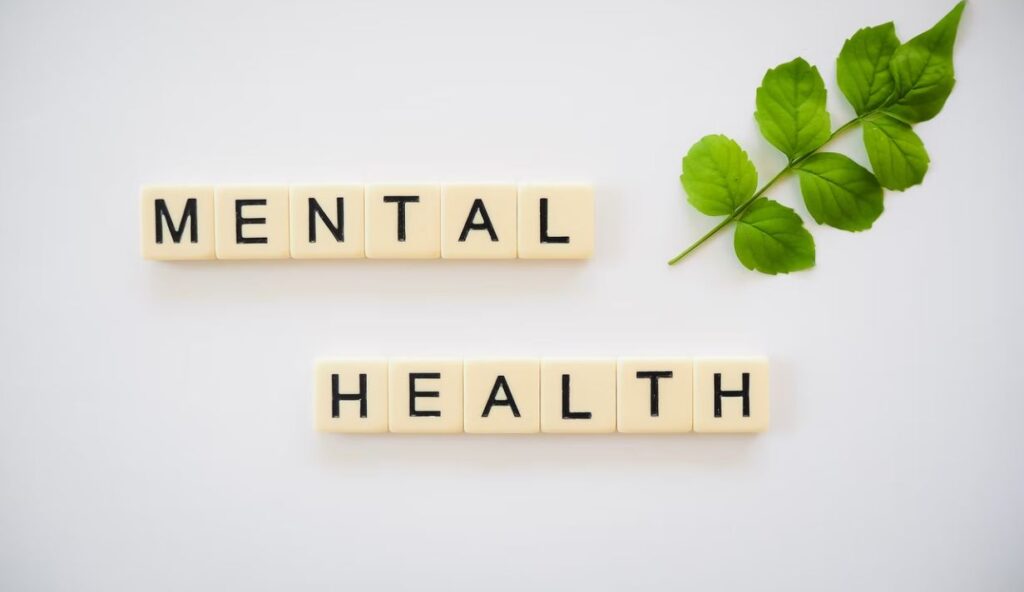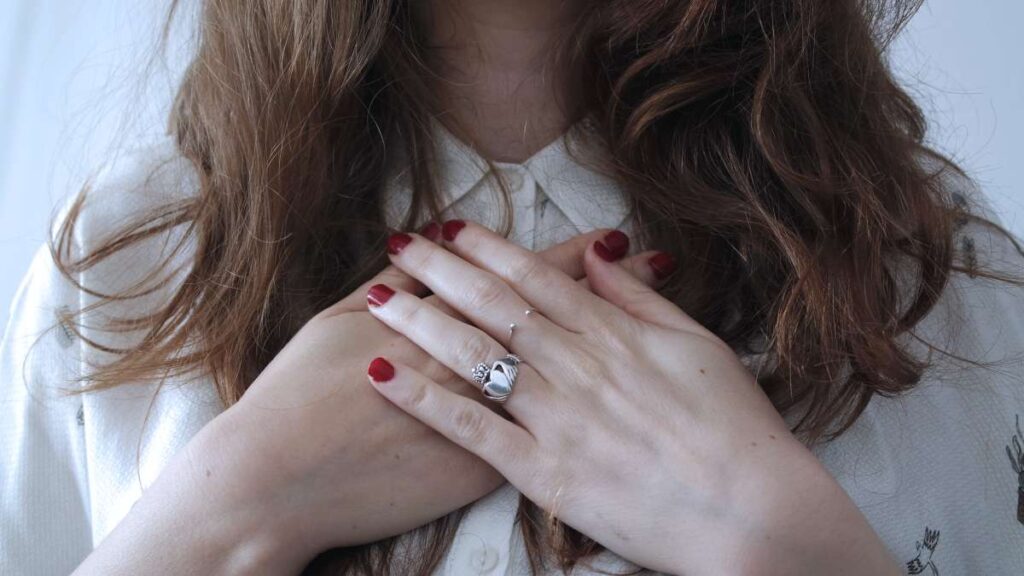Some others choose to dance to their favourite songs from the comfort of their own rooms while listening to them on Spotify or the radio. While others hope to take up ballroom or hip-hop dancing. As an alternative, they may sign up for a tango class at the local community centre. The physical health advantages of dancing are the same whether you like to dance solo or as part of a more structured and coordinated programme.
When you dance, you are doing more than just moving your body to the beat or showing off your emotions. There is no doubt that you are burning calories and reaping the benefits of your hard workout. But not only is this a great method to break a sweat in an unconventional fashion, it also improves cognitive function. To begin, you'll be able to take a break from the pressures of your regular life. Finally, if you spend all your time dancing, you won't have any time for meditation. Dancing has many substantial benefits for one's mental health, some of which may not be immediately apparent.
List Of Dance That Helps Your Mental Health
Dance that is Free-Flowing

An article detailing the results of a UCLA Health study published in the August 2021 issue of Complementary Therapies in Clinical Practice reports that participants who engaged in mindful, free-flowing dance reported improvements in their mental health. One thousand dancers from all over the world who were experiencing sadness, anxiety, or trauma in their lives filled out the survey that formed the basis of the article.
Overwhelmingly (98%), dancers felt better after the routine. Many participants also noted that conscious dancing increased their empathy and self-assurance.
When the participants were dancing on their own accord, Prabha Siddarth, PhD, a research statistician at UCLA's Jane and Terry Semel Institute for Neuroscience and Human Behaviour and the study's senior author, observed how they felt.
Dance That Has Been Choreographed
Two researchers have compared the effects of walking, stretching, and dancing on the brain wiring and grey matter of senior persons, publishing their findings in Frontiers in Ageing Neuroscience. When compared to other activities, dance once again produced the most evident positive results.
The study included 3 groups of participants in their 60s and 70s who had healthy brains and exhibited no evidence of cognitive decline. Three groups were split up to do different activities; one went for a stroll, another stretched and practised their balance, and the third learnt basic country dance moves. The choreography the dancers followed became progressively more challenging as the performance went on.
Each person put in their three times-weekly, one-hour-per-day shift doing the prescribed activity. Six months later, the participants' brains were scanned again, and the results were compared to the scans taken before they started their regimens.
The people who had learnt country dancing had denser white matter in the portion of the brain that processes memories. Deterioration of white matter is associated with ageing and has been linked to diminished cognitive function. Neurodegeneration is a natural part of ageing, but dancing can slow or even stop it. Therefore, dancing is not only a physically healthy kind of cardio exercise. In terms of psychological well-being, it's a win-win!
See our list of available Rehabilitation Programmes to help you make an informed decision for your treatment.
Partner dances include the tango, salsa, waltz, country dancing, and ballroom dancing. The dances are fun to watch and help bring people together. Learning new dances is a great way to exercise your intellect in addition to your body. Dancing is a form of physical activity that has been shown to have positive effects on cognitive function.
Dance with Perfect Timing
Recent research out of Brazil discovered that group synchronised dancing activities brought people together and promoted friendships. Also, it helped people endure more agony before giving up. When you move in time with the people around you at a Zumba class or in a flash mob, you are engaging in a sort of collective dancing to music. It's great for making people feel closer to one another.
Substances known as endorphins are critical to human development and socialisation. In turn, this makes us feel more connected to the people around us as we dance. The researchers wanted to find out how endorphins affect how much pain people feel. Subjects' reactions in their non-dominant arms to a blood pressure cuff's gradual inflation were recorded to gauge their perception of discomfort. The participants were asked to identify the point at which the pressure of dancing became intolerable to them. The study found that people who moved more vigorously and in time with others were more likely to develop close friendships and show greater tolerance for pain.
Therapeutic Dance

Some people find benefit in participating in dance or movement therapy. Psychotherapeutic use of movement to develop emotional, social, cognitive, and physical integration of the individual with the aim of enhancing health and well-being; this is how the American Dance Therapy Association (ADTA) defines dance therapy. [Insert citation here]
Researchers looked into the psychiatric benefits of physical activity and dancing. Many encouraging signs were uncovered by its results. Dancing and other forms of physical activity have been linked to a variety of positive health outcomes, including enhanced quality of life, enhanced social abilities, and diminished levels of sadness and anxiety. If you haven't already, give some thought to adding dancing as a part of your programmes for both physical and mental wellness.
Benefits
Your mood, IQ, and social skills are all bound to increase along with your dancing abilities. Learning the dance steps and perfecting your technique can:
Improve Self-Esteem.
The term "self-esteem" refers to the degree to which an individual regards and values themselves. The ability to learn and master new dance moves is a confidence and self-esteem booster since it demonstrates to the dancer that they have the potential to grow and develop as a performer.
Are you looking for the best rehab centre? Then Refocus Rehab Melbourne is the answer.
Help You Meet New People.
Group activities in which you regularly engage with other people have been shown to have positive effects on mental health. If you talk to other individuals and socialise, you will feel better. Furthermore, it provides a sense of community that aids in reducing feelings of isolation. Participating in group dance classes, in which students learn new moves while moving in sync with their peers, is an excellent way to gain these mental health benefits.
Work On Boosting Both Your Mood And Your Attitude.
Dancing has many benefits, including elevating your spirits while also enhancing your cognitive, physical, and social abilities. Many people choose to learn to dance because they find it lifts their spirits. Dancing, and other forms of physical expression, allow people to release their inhibitions and have fun. When people feel liberated, their bodies release dopamine and other feel-good hormones. Researchers have shown that this hormone can help people feel happier and less anxious or depressed.
The stress-reducing effects of dancing are similar to those of aerobic exercise, and the benefits extend to one's energy and mood, according to a study published in 2007. This is especially true of hip hop. In addition, studies have shown that persons whose dances emphasise the sense of touch report lower levels of tension and anxiety, leading to enhanced psychological health.
Reduce Both Feelings Of Depression And Anxiety.
Dancing raises heart rate and tones all muscle groups, making it an excellent cardio workout. Exercising can help alleviate symptoms of depression and anxiety because it triggers the production of specific chemicals in the brain. In addition, it provides an escape route from the endless loop of stress and pessimism. This is the kind of thing that keeps running through your mind. People can "loosen up" and feel more comfortable talking with others by dancing. Those who suffer from social anxiety may gain significantly from these benefits. This is why, throughout the course of the last few decades, therapists have advocated dance for patients with social anxiety and a fear of public speaking. Dancing styles including salsa, hip hop, freestyle, and ballroom may do wonders for a person's social confidence.
Safeguard The Memories You Have.
Remembering things like names, locations, and dates gets increasingly challenging as we age. Taking on new challenges and learning skills, like learning new dance moves and styles, increases your brain's capacity to recall nuances like these. Dementia risk is lowered with this.
Learned dance styles can have a major bearing on the positive effects of dancing on the mind. More intricate styles of dance, such as ballroom dancing, rely heavily on improvisation. These will do more to strengthen your decision-making skills than learning rote movements and procedures. However, modern dance's expressive forms provide greater latitude for individual expression.
Dancing requires constant focus on the ever-changing patterns of movement, as well as the ability to hold all of the steps and patterns in one's head at simultaneously. Dancing, which necessitates memorisation of choreography, is a great type of therapy for enhancing memory, inspiration, and learning capacity.
Contemporary, hip hop, and ballroom dancing are the most popular forms of dance found to increase cognitive function. Do you want to start including dance in your daily life? For your convenience, here are a few basic pointers to remember:
- Sign up for an online dance course. Most people would agree that going to the gym or some other fitness centre is the greatest option if a pandemic were not already underway. When it's important to keep some distance between you and other dancers, taking dance lessons online is a good option. Since each dance class meets at a certain time each week, students have a greater incentive to stick to their regimen.
- Do some Zumba moves in your living room. In terms of time and money, dancing alone is the most efficient choice. Prerecorded dance courses, such as Zumba and others, are available online and may be done by anybody in the convenience of their own homes. This is why it is important to build a constant prompt into one's routine.
- Have a get-together with just you. Clubgoers are usually met by loud, pulsating music that makes them want to dance and let go [6]. Staying inside while playing music loudly enough to drown out conversation is one way to replicate this effect at home. It's even doable for two people to accomplish it remotely at the same time. It allows people to say what they want, when they want to.
You may improve your health and happiness by engaging in a variety of hobbies, and dancing is only one of them. Talking to a professional in the field of mental health is the most effective way to acquire insight into and master feelings of anxiety or despair, and it has many positive impacts on both mental and physical health.
It Has The Potential To Boost Confidence.
Dancing's positive effects on self-esteem and self-confidence can be attributed to its emphasis on individuality and its emphasis on group interaction.
By participating in dancing in an environment that fosters social interaction, individuals can develop a sense of community with others who have a similar interest. The development of self-assurance in social situations and the reduction of social anxiety are both aided by deeper ties with friends and family.
Those who make time for dancing in their lives are likely to be persistent and see a project through to its completion. The satisfaction of a job well done comes from persistent effort fueled by a burning desire to succeed. As they improve their technique and reach their goals, dancers gain confidence in themselves.
Both Depression And Anxiety Are Alleviated As A Result.
Evidence suggests that the physical motions of dancing help alleviate tension, anxiety, and sadness. Dancing, like aerobic exercise, can help you feel better by letting go of tension and stress. Exercising raises levels of the neurotransmitters dopamine and endorphin, which are responsible for pleasure and happiness.
This blog post will help you make an informed decision about Rehab Treatment Melbourne fees for different treatments.
Feeling in the "flow" is a common experience for dancers. It's a meditative state where the dancer's mind is completely focused on the present moment rather than on the stresses of the past or future.
Having situations where one can tune out distractions and fully immerse oneself in the task at hand is helpful in developing a heightened awareness and mindfulness of one's own mental state. Furthermore, dancing enhances the brain's connectivity and chemical communication, both of which help to keep one's mental health in check. Chemical transmission can be enhanced, lowering the risk of acquiring mental health issues.
It Will Make A Positive Contribution To Cognitive Ability.
Dancing not only strengthens the body, but also the mind. A dancer's ability to remember steps and maintain focus are both strengthened as they practise a routine. Learning dancing routines is a great way to pick up another useful skill: pattern identification.
It has been hypothesised that acquiring certain mental capacities is linked to a lower chance of contracting Alzheimer's disease and other forms of dementia. The addition of dancing to the treatment plan for patients with Alzheimer's has also been found to improve their quality of life and slow the advancement of the disease.
It Is Beneficial To The Expression Of Emotions.
Dancing is a great way to release pent-up emotions via physical movement. Dancers are able to deal with challenging emotions and let them go via the moves and routines they learn in dance class.
In a performance setting, where the dancer is seen by an audience, this freedom of expression can flourish. What one has difficulty putting into words to others can often be represented via movement.
Developing more sophisticated methods of expressing one's feelings is closely linked to experiencing a state of flow, which in turn helps alleviate depression. An attentive dancer may keep in touch with their sentiments while still expressing them in their movements. One way to prevent the emergence of clinical depression is to become aware of these sensations.
Potential Risks
Injury.
Like any other type of physical activity, dancing can cause harm if not done properly. Dancers frequently suffer from hip discomfort, foot pain, knee pain, and ankle pain, to name a few of the most common types of injury. Avoid putting too much strain on your body. Make an appointment with your primary care physician if you're experiencing pain or soreness that is keeping you awake at night, doesn't go away, or worsens when you dance.
Self-Consciousness.
Even seasoned pros occasionally face emotions of self-consciousness and insecurity when experimenting with new dance styles or mastering new techniques. Focus on the actions themselves rather than how you think you look to others if you're experiencing anxiety when learning anything new.
Advice On How To Improve Your Mental Health Through The Art Of Dancing
Almost Any Environment Is Suitable For Dancing.
To determine the most effective layout for you, try out a number of different options. Then you can dance in many different situations: alone yourself, with friends, on the spot, or even in front of an audience. Take up dance and learn some moves! Taking a dancing class, either in person or remotely, is a great way to meet new people and have fun at the same time. Schools, community centres, fitness clubs, and other organisations of all stripes routinely provide studio dancing programmes. If you do a search on Google for "dancing lessons near me," results will appear that are local to you.
Dancing With Oneself Is Encouraged.
Dancing can be just as enjoyable when done alone as it is when done with others. Try putting on some upbeat music and moving to the beat. There is less pressure to worry about how you seem in front of others and more freedom to simply enjoy the moment when you are alone.
Acquire A Set Pattern.
Practicing only improvised dance steps isn't a good way to push yourself or learn anything new. Instead of coming up with your own dance routine, why not try learning one that someone else has made? You can use apps or view videos that will show you exactly what to do to complete a task. Watching a dance performance multiple times might teach you new steps and combinations to use into your own dancing.
Avoid Being Too Judgmental Of Others.
There are many dancers that do so because they find meaning in the act. Natural ability is not required! If dancing makes you happy, then dance. Never let your fear of looking foolish keep you from enjoying yourself. Dancing is a complex art form, and even the most seasoned performers occasionally flub their steps. They use them to expand their knowledge and develop their skills; you should do the same.
The Brain Is A Completely Integrated System.
Because the brain operates as a whole, alterations in one area can have far-reaching consequences for the whole. The consequences on one's mental health could be either beneficial or detrimental.
Evidence suggests that dancing improves brain function across the board. Mindfulness, fostered through practise of flow and focus, is a powerful tool for dealing with difficulties like anxiety. Boosting one's self-worth and confidence might have a similar effect on one's social anxiety.
Although the thought of walking into a dance school for the first time can seem daunting, the long-term benefits of dance make it well worth the effort.
Conclusion
Dancing has many substantial benefits for one's mental health, some of which may not be immediately apparent. A UCLA Health study found that participants who engaged in mindful, free-flowing dance reported improvements in their mental health. Two researchers have compared the effects of walking, stretching, and dancing on the brain wiring and grey matter of senior persons. Dancing has been shown to have positive effects on cognitive function. Learning new dances is a great way to exercise your intellect in addition to your body.
When you move in time with the people around you at a Zumba class or a flash mob, you are engaging in collective dancing to music. People who move more vigorously and in time with others are more likely to develop close friendships and show greater tolerance for pain. Dancing and other forms of physical activity have been linked to a variety of positive health outcomes including enhanced quality of life, enhanced social abilities, and diminished levels of sadness and anxiety. Many people choose to learn to dance because they find it lifts their spirits. Dancing raises heart rate and tones all muscle groups, making it an excellent cardio workout.
Dancing styles including salsa, hip hop, freestyle, and ballroom may do wonders for a person's social confidence. Dancing is a great therapy for enhancing memory, inspiration, and learning capacity. Contemporary, hip hop, and ballroom dancing are the most popular forms of dance found to increase cognitive function. Prerecorded dance courses, such as Zumba and others, are available online and can be taken remotely. By participating in dancing, individuals can develop a sense of community with others who have a similar interest.
Dancing not only strengthens the body, but also the mind. The addition of dancing to the treatment plan for patients with Alzheimer's has also been found to improve their quality of life. Dancing is a great way to release pent-up emotions via physical movement. Dancers are able to deal with challenging emotions and let them go via the moves they learn in dance class. Developing more sophisticated methods of expressing one's feelings is closely linked to experiencing a state of flow.
Dancing can be just as enjoyable when done alone as it is when done with others. There is less pressure to worry about how you seem in front of others. The long-term benefits of dance make it well worth the effort. Evidence suggests that dancing improves brain function across the board.
Content Summary
- The physical health advantages of dancing are the same whether you like to dance solo or as part of a more structured and coordinated programme.
- But not only is this a great method to break a sweat in an unconventional fashion, it also improves cognitive function.
- Finally, if you spend all your time dancing, you won't have any time for meditation.
- Dancing has many substantial benefits for one's mental health, some of which may not be immediately apparent.
- List Of Dance That Helps Your Mental HealthDance that is Free-FlowingAn article detailing the results of a UCLA Health study published in the August 2021 issue of Complementary Therapies in Clinical Practice reports that participants who engaged in mindful, free-flowing dance reported improvements in their mental health.
- One thousand dancers from all over the world who were experiencing sadness, anxiety, or trauma in their lives filled out the survey that formed the basis of the article.
- Overwhelmingly (98%), dancers felt better after the routine.
- Many participants also noted that conscious dancing increased their empathy and self-assurance.
- Dance That Has Been ChoreographedTwo researchers have compared the effects of walking, stretching, and dancing on the brain wiring and grey matter of senior persons, publishing their findings in Frontiers in Ageing Neuroscience.
- The study included 3 groups of participants in their 60s and 70s who had healthy brains and exhibited no evidence of cognitive decline.
- Three groups were split up to do different activities; one went for a stroll, another stretched and practised their balance, and the third learnt basic country dance moves.
- The choreography the dancers followed became progressively more challenging as the performance went on.
- Each person put in their three times-weekly, one-hour-per-day shift doing the prescribed activity.
- Six months later, the participants' brains were scanned again, and the results were compared to the scans taken before they started their regimens.
- The people who had learnt country dancing had denser white matter in the portion of the brain that processes memories.
- Deterioration of white matter is associated with ageing and has been linked to diminished cognitive function.
- Neurodegeneration is a natural part of ageing, but dancing can slow or even stop it.
- Therefore, dancing is not only a physically healthy kind of cardio exercise.
- Partner dances include the tango, salsa, waltz, country dancing, and ballroom dancing.
- The dances are fun to watch and help bring people together.
- Learning new dances is a great way to exercise your intellect in addition to your body.
- Dancing is a form of physical activity that has been shown to have positive effects on cognitive function.
- Dance with Perfect TimingRecent research out of Brazil discovered that group synchronised dancing activities brought people together and promoted friendships.
- When you move in time with the people around you at a Zumba class or in a flash mob, you are engaging in a sort of collective dancing to music.
- Substances known as endorphins are critical to human development and socialisation.
- The researchers wanted to find out how endorphins affect how much pain people feel.
- Subjects' reactions in their non-dominant arms to a blood pressure cuff's gradual inflation were recorded to gauge their perception of discomfort.
- The study found that people who moved more vigorously and in time with others were more likely to develop close friendships and show greater tolerance for pain.
- Therapeutic DanceSome people find benefit in participating in dance or movement therapy.
- Dancing and other forms of physical activity have been linked to a variety of positive health outcomes, including enhanced quality of life, enhanced social abilities, and diminished levels of sadness and anxiety.
- The ability to learn and master new dance moves is a confidence and self-esteem booster since it demonstrates to the dancer that they have the potential to grow and develop as a performer.
- Many people choose to learn to dance because they find it lifts their spirits.
- Those who suffer from social anxiety may gain significantly from these benefits.
- Taking on new challenges and learning skills, like learning new dance moves and styles, increases your brain's capacity to recall nuances like these.
- Learned dance styles can have a major bearing on the positive effects of dancing on the mind.
- Do you want to start including dance in your daily life?
- For your convenience, here are a few basic pointers to remember:Sign up for an online dance course.
- Do some Zumba moves in your living room.
- Have a get-together with just you.
- You may improve your health and happiness by engaging in a variety of hobbies, and dancing is only one of them.
- Talking to a professional in the field of mental health is the most effective way to acquire insight into and master feelings of anxiety or despair, and it has many positive impacts on both mental and physical health.
- By participating in dancing in an environment that fosters social interaction, individuals can develop a sense of community with others who have a similar interest.
- The development of self-assurance in social situations and the reduction of social anxiety are both aided by deeper ties with friends and family.
- Dancing, like aerobic exercise, can help you feel better by letting go of tension and stress.
- This blog post will help you make an informed decision about Rehab Treatment Melbourne fees for different treatments.
- Feeling in the "flow" is a common experience for dancers.
- Furthermore, dancing enhances the brain's connectivity and chemical communication, both of which help to keep one's mental health in check.
- Chemical transmission can be enhanced, lowering the risk of acquiring mental health issues.
- It has been hypothesised that acquiring certain mental capacities is linked to a lower chance of contracting Alzheimer's disease and other forms of dementia.
- The addition of dancing to the treatment plan for patients with Alzheimer's has also been found to improve their quality of life and slow the advancement of the disease.
- Dancing is a great way to release pent-up emotions via physical movement.
- Avoid putting too much strain on your body.
- Even seasoned pros occasionally face emotions of self-consciousness and insecurity when experimenting with new dance styles or mastering new techniques.
- Take up dance and learn some moves!
- Taking a dancing class, either in person or remotely, is a great way to meet new people and have fun at the same time.
- Dancing can be just as enjoyable when done alone as it is when done with others.
- Try putting on some upbeat music and moving to the beat.
- There is less pressure to worry about how you seem in front of others and more freedom to simply enjoy the moment when you are alone.
- Acquire A Set Pattern.
- Practicing only improvised dance steps isn't a good way to push yourself or learn anything new.
- Instead of coming up with your own dance routine, why not try learning one that someone else has made?
- Watching a dance performance multiple times might teach you new steps and combinations to use into your own dancing.
- If dancing makes you happy, then dance.
- The consequences on one's mental health could be either beneficial or detrimental.
- Evidence suggests that dancing improves brain function across the board.
- Although the thought of walking into a dance school for the first time can seem daunting, the long-term benefits of dance make it well worth the effort.
Frequently Asked Questions
It has been demonstrated that the motions of dance can alleviate feelings of stress, anxiety, and despair. Dance, in a manner comparable to that of cardiovascular exercise, helps relieve stress and anxiety. Dopamine and endorphins, two neurotransmitters that are important for emotions of pleasure and happiness, are both increased as a result of engaging in physical activity.
The benefits of exercise on mental health include a reduction in feelings of anxiety, despair, and bad mood, as well as an improvement in self-esteem and cognitive performance. It has also been discovered that regular exercise helps improve symptoms of poor self-esteem and social disengagement.
This hormone has been shown to improve a person's mood as well as reduce some of the symptoms of anxiety and sadness. A study that was conducted in 2007 indicated that in addition to improving energy levels and mood, dancing, and more specifically hip hop dancing, reduces stress levels in the same way that partaking in forms of aerobic exercise does.
Dance improves sensitivity, understanding, appreciation, and consideration for others, both for their similarities and differences.
Dancing is a great way to be in shape since it helps you burn calories, builds muscle, enhances balance, develops flexibility, and is a great workout for the heart. Research has shown that participating in dance can contribute to increased cognitive development.



















